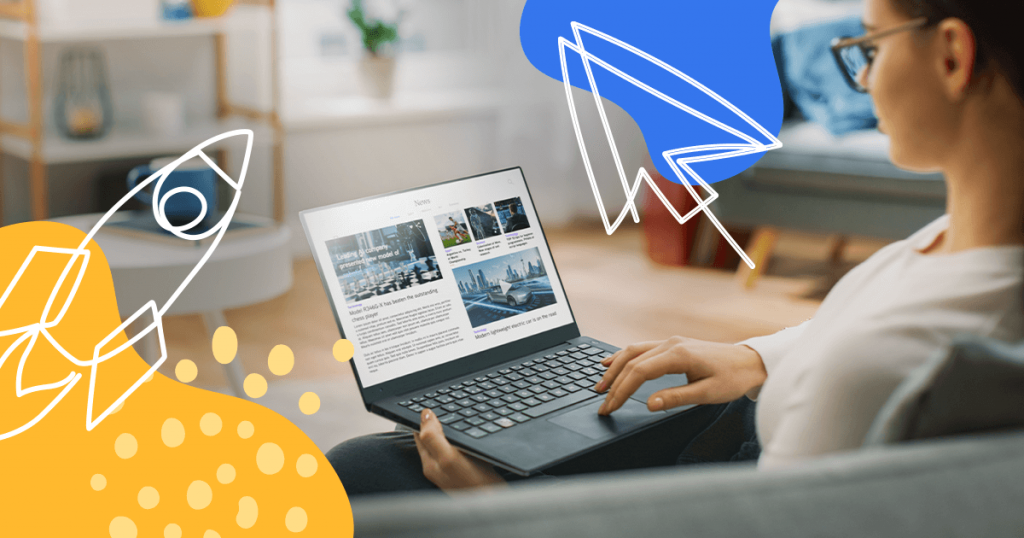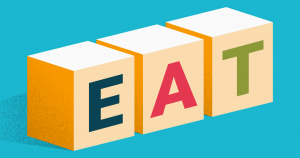When starting your own business or blog, it’s critical to understand the different components of your webpage and how they work together to expand your business, reach out to clients, and help you have a strong online presence.
Websites and landing pages are both different components of your online presence that can help you appear on search results, therefore helping you gain more clients.
They are also crucial parts of your overall digital marketing strategy.
Below, we’ll highlight some of the differences between a landing page vs website, and help you understand how to utilize both to grow your business.
What is a Landing Page?
A landing page is a page dedicated to converting leads into sales and building clientele. Think of it as the “cashier” of your store.
A landing page can help customers do a variety of tasks, including:
- Input contact information
- Subscribe to your website or email chain
- Sign up for coupons
- Purchase a product or plan
A landing page seems simple when compared to a website, and it is. Aesthetically, a landing page is a simple design that doesn’t seem to be attention-grabbing.
However, landing pages play an important role in helping convert leads into sales, grasping the attention of customers to encourage them to purchase a product or service, and helping distinguish your services from the rest of your website.
What is a Website?
A website is a site that has a variety of features, including:
- Blogs
- Home page
- Services
- Products
- About Us page
- Contact Us page
These features are presented through navigation bars on the website itself. The navigation bars help customers browse through your website, learn more about your brand, and get a better sense of who you are as a business.
It’s important to design a website that is user-friendly and allows for a better experience.
You never want to design a website that is complicated to use, is crowded with information, or isn’t aesthetically pleasing.
In addition, websites should also have outbound links to social media, images, and even links to other collaborative businesses you might be partnered with.
Landing Page vs Website: Key Differences Between Them
Now that you have a bit of knowledge behind what a landing page and website are, it’s time to learn the key differences between the two.
1. Navigation Bars don’t exist on Landing Pages
For starters, a landing page is a webpage that is standalone and doesn’t have a navigation bar.
Why the simplicity? Well, navigation bars can be very distracting.
They are menus at the top of your page that re-direct users to other pages on your website.
Because a landing page is designed to convert leads into sales, it’s best to not distract clients away from the landing page through a navigation bar.
This lack of a navigation bar can make landing pages seem very bland, and it might seem like a good decision to opt out of using them.
On the contrary, landing pages without a navigation bar help users focus their attention on buying a product or inputting their contact information for a business.
Remember, navigation bars, when used on landing pages, are nothing but exit links.
In fact, the company AmeriFirst Home Mortgage experimented and proved this very stance on navigation bars. They now have conversion rates of between 30 and 40 percent ever since they went “naked” and got rid of their navigation bar on their landing pages.
2. Navigation Bars are pretty useful for Websites
For people that want to learn more about a business, a navigation bar is a great way to help them explore more about a business’s mission and gives them a pleasant browsing experience.
Websites have navigation bars that help provide the foundation and build trust for their business.
Instead of being distracting, navigation bars also help websites link to different blogs that can use SEO to help them increase their search rankings.
They also make it easier for potential customers to browse and research different services that a business could offer.
Not only is this good for the business (who can showcase all their different products and services), but it’s also good for customers that want to know more about a company before investing their hard-earned money with them.
3. Landing Pages have the goal of Converting Leads
Landing pages are specifically designed to convert leads into sales.
They are no-nonsense, simple ways of capturing your audience’s limited attention span and utilizing a strategically designed page to minimize distractions.
Landing pages are excellent tools that can be used if you’re paying for ad space. They are much better at getting your money’s worth and increasing your chances of sales than a website is.
Geo-targeted landing pages are a specific type of landing page that have the goal of reaching out to customers in different parts of the nation, or even the world. They can also help generate local leads.
Their goal is the same as landing pages, which is to turn leads into sales, but they have the added benefit of spreading the word about your business to internet users in different parts of the world.
4. Websites have many Different Goals
Websites are multi-purposed in that they can be used for a variety of businesses:
- Showcase your services.
- Show off previous work through photo galleries.
- Create collections of featured products.
- Show blog posts and position yourself as an expert or authoritative site.
- Help clients research your services.
- Showcase personnel or team members.
- Inform your clients about your business history, mission statements, etc.
- Have a space to show reviews on your business.
The goal of a website should also be to establish trust with your customers and eventually get them to purchase your product or service.
It can also help you integrate with social media and increase your customers through channels such as Instagram, Facebook, and Pinterest.
How do Landing Pages and Websites Work Together?
Landing pages often have a single navigation link that can direct a customer to your actual website.
One of the more popular options for this singular navigation link is to integrate it into your brand’s logo.
Any other type of navigation link can be distracting. However, a single navigation link can help your customers easily explore your website before or after signing up or purchasing your product.
Websites can also integrate a landing page into a part of their navigation bar as a separate page.
You can even combine both a landing page and a website into a single website known as a microsite.
Keep in mind that a microsite is usually a long webpage, since you’ll still want to show your landing page at the top and capture users’ attention fast, but are free to provide more information about your business as users scroll down your page.
When to Use Landing Pages and Websites
Landing pages are great to use if:
- You have a new product or service launching.
- You don’t have a full website yet.
- You’re paying for ads and want users to visit your landing page to buy your product.
- You have services in multiple locations. In this case, designing various geo-targeted landing pages will be your best option.
Websites are good to use for business owners that:
- Offer various services and products.
- Have various pages ready to publish on the internet.
- Want to integrate different blogs, apps, or other websites.
- Want to establish trust.
- Want to showcase their business’s mission and invite customers to research their business.
How to Design Landing Pages and Websites
As we mentioned earlier, landing pages will have unique designs that are quite different than traditional websites.
You’ll want to use different design elements for both your website and landing page.
In a landing page design, eye-catching and informative is the way to go. You’ll want to design a landing page that is:
- Visually pleasing
- Bold
- Has a strong call-to-action that encourages users to buy your service
- Is distraction-free
- Has strong images
- Is interactive and allows users to buy or input information
For websites, you will still want to use aesthetically-pleasing designs and images.
However, you should also keep in mind that your goal for a website is to keep a user’s attention for as long as possible. Your website should be:
- Simple to use.
- Helps people navigate easily.
- Helps attract people’s attention and encourages them to visit different pages.
- Interacts and builds a connection with the customer.
- Includes different information about your business.
Looking to optimize your landing page or website?
Get access to top-notch writers at WriterAccess who can help you create compelling content. Click here to explore the benefits of working with professional writers for your landing page or website.
Explore the Power of ION Page Builder!
Looking to take your online presence to the next level? The ION Page Builder is here to revolutionize the way you create landing pages and websites. This innovative tool goes beyond the conventional, offering a range of functionalities that can enhance user engagement and boost conversions.
Key Features:
- Interactive Elements: Easily incorporate interactive elements such as quizzes, polls, and forms to captivate your audience. Engage visitors in a meaningful way, turning casual clicks into valuable interactions.
- User-Friendly Interface: No coding skills? No problem. IOL Page Builder’s intuitive interface allows you to design stunning pages effortlessly. Drag-and-drop elements, customize styles, and see your vision come to life in real-time.
- Mobile Responsiveness: In today’s mobile-centric world, it’s crucial that your pages look great on all devices. IOL Page Builder ensures that your creations are not only visually appealing but also optimized for seamless performance on smartphones and tablets.
- Analytics and Insights: Track the performance of your pages with built-in analytics. Understand user behavior, measure conversion rates, and refine your strategies for even better results.
Why Choose IOL Page Builder:
- Boost Conversions: Interactive elements and engaging design contribute to higher conversion rates, turning visitors into customers.
- Save Time and Effort: With its user-friendly interface and ready-to-use templates, IOL Page Builder streamlines the page creation process, saving you time and effort.
- Stay Ahead of the Curve: Interactive content is the future of online engagement. Stay ahead of your competition by adopting cutting-edge technology that sets you apart.
Ready to Elevate Your Online Presence? Try IOL Page Builder for Free!
Explore the potential of interactive pages with IOL Page Builder. Sign up now for a free 14-day trial and witness firsthand how interactivity can transform your landing pages and websites.



![[ROCK NA] [EBOOK SEO] Complete Guide](https://rockcontent.com/wp-content/uploads/2024/06/banner_Search-Engine-Optimization.png)






